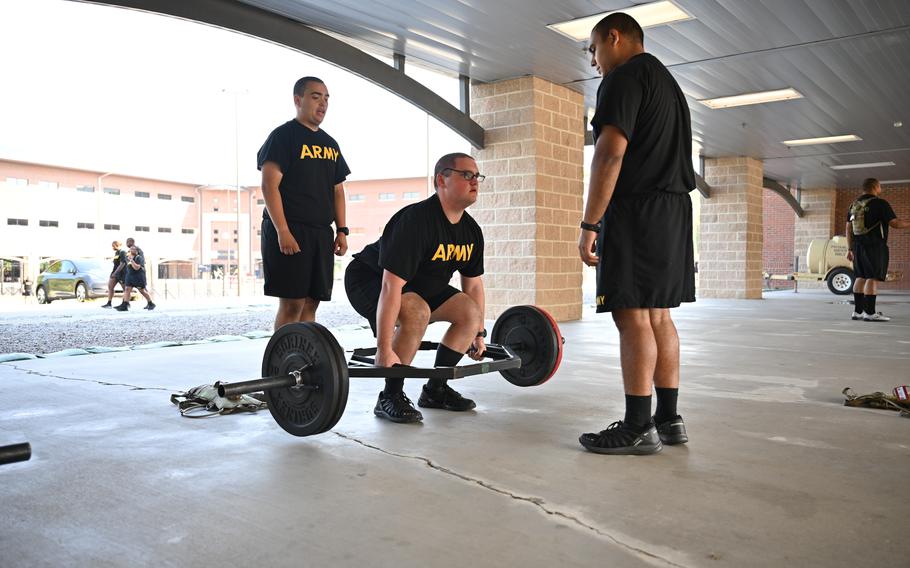
A student in the fitness track of the Army’s Future Soldier Preparatory Course works on deadlifts during a training session in June 2023 at Fort Jackson, S.C. The fitness track of the course educates students on the Army’s Holistic Health and Fitness System to help them lose body fat in order to meet the Army’s enlistment standards. (U.S. Army)
WASHINGTON — The Army is on pace to meet its recruiting goal for this year but remains challenged in growing back its end strength after years of shortfalls, the Army secretary said Thursday.
The service is expected to hit its enlistment goal of 55,000 recruits for fiscal 2024 and enlist another 5,000 through a delayed entry program, Army Secretary Christine Wormuth told the Senate Armed Services Committee.
“We still have six months left to go in the fiscal year so the [Army chief of staff] and I don’t want to be overconfident but right now we are on a very good pace,” she said. “We are doing considerably better this year.”
The traditionally difficult recruiting months of February and March were “very good,” she said, and boded well for the future.
Still, the Army has had to lower its expectations in the face of a recruiting crisis that has affected nearly the entire military. The service last year set a recruiting goal of 65,000 and slashed it significantly for this year after recruitment fell short by nearly 10,000 soldiers.
Sen. Tom Cotton, R-Ark., confronted Wormuth over the shrinking enlistment targets, accusing the Army of moving the goal posts to achieve a more favorable recruiting outcome.
“It’s improving because you’re throwing a dart at the wall and then drawing the bullseye around it,” he said. “You don’t think that is a little suspicious, that you’re simply trying to avoid negative headlines once again for your failure to meet basic recruiting goals?”
Wormuth said the Army looks at “what’s possible” and sets goals that are achievable. She stressed the service’s current end strength has met all the demands of the military’s combatant commands.
“I’m not focused on headlines,” she said. “What I’m doing is doing everything possible to help the Army improve its recruiting and that’s what we’re doing.”
The service has found success with its Future Soldier Prep Course, a program that gives lower-performing recruits fitness and academic instruction to help them meet military standards and go on to basic training. Almost 18,000 young people have graduated from the course — a 95% success rate, Wormuth said.
The Army is also reorganizing its recruiting force under a single three-star commander and creating professional job classifications for enlisted soldiers and warrant officers who specialize in recruiting.
The first cohort of warrant officers will be going out in the field to recruit in the summer, Wormuth said.
“We are fundamentally transforming our recruiting enterprise to better compete in the 21st century job market,” she said.
The Army’s long-term goal is to increase its authorized end strength from 445,000 active-duty soldiers now to 470,000 by fiscal 2029. The service is structured for a force of about 494,000 but shed soldiers amid an ongoing transition from counterinsurgency missions to large-scale combat operations.
Wormuth said the Army will leverage data to help its recruiters better pinpoint potential candidates and is exploring how to break into the college market.
“The [Army] chief and I are both committed to growing back our end strength,” Wormuth said.
She added the Army will need help from lawmakers to boost the appeal of military service as public trust in government institutions declines. More than 80% of today’s Army recruits come from military families, Wormuth said.
“That’s wonderful in many ways but it’s also a little concerning,” she said. “We can’t rely on just military families to give their kids to the Army so the more all of you can talk about the value of service, that will help us.”